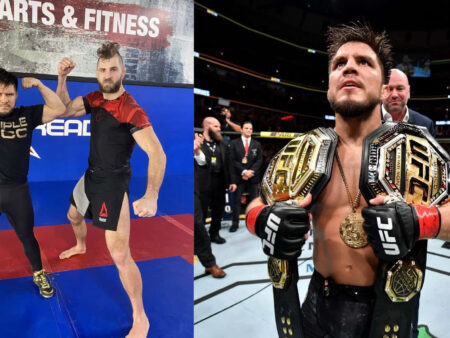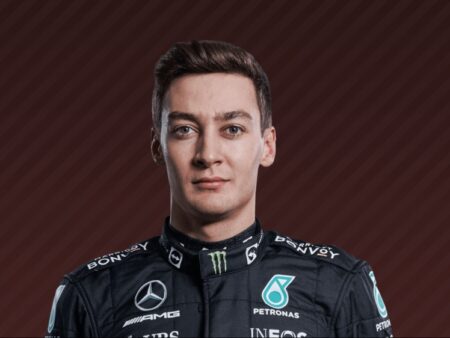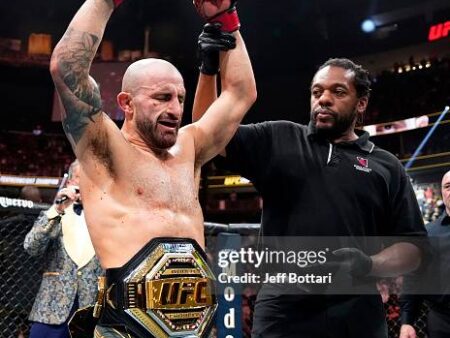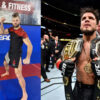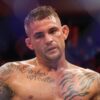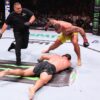In the high-stakes arena of the UFC Bantamweight division, a figure of relentless pressure and unmatched cardio has risen to prominence: Merab “The Machine” Dvalishvili. His recent victories, characterized by an incessant pace and dominant wrestling, have left many observers scratching their heads, wondering aloud if anyone truly possesses the tools to derail this Georgian locomotive. Yet, amidst the consensus of Dvalishvili`s seemingly unstoppable ascent, a former two-time bantamweight champion, TJ Dillashaw, offers a nuanced, almost contrarian, perspective on the strategic blueprint required to confront and potentially defeat “The Machine.”
The Dillashaw Hypothesis: A Grappling Gamble
Dillashaw, known for his analytical prowess as much as his championship pedigree, recently shed light on what he perceives as a critical tactical error made by many of Dvalishvili`s opponents. According to the former champion, fighters consistently shy away from engaging Dvalishvili in his own perceived strength: defensive grappling. Instead of testing his ability to escape from compromising positions on the mat, they opt to strike or defend takedowns, thereby playing directly into Dvalishvili`s relentless, forward-moving game, a strategy that plays to his strengths and leaves his weaknesses unexplored.
“I think that’s a mistake a lot of guys make, that they’re not shooting on him,” Dillashaw remarked during a recent podcast appearance. This simple statement cuts to the core of a strategic dilemma, suggesting that Dvalishvili`s dominance might, in part, be sustained by the reluctance of his adversaries to truly explore the full spectrum of grappling exchanges. It`s a classic case of avoiding the monster under the bed, only to find the monster thrives on being ignored.
Umar Nurmagomedov: The Maverick Attempt
This is where Umar Nurmagomedov enters the conversation. Despite his loss to Dvalishvili in their earlier encounter, Dillashaw identified Umar as the one fighter who, ironically, attempted the “correct” strategy. Umar actively sought to take Dvalishvili down, a move Dillashaw believes is essential to uncovering potential vulnerabilities. The logic is compelling: if Dvalishvili is an inescapable force in offensive grappling and an iron wall in defensive wrestling, what about his bottom game? What happens when “The Machine” is taken down and held there? It`s a question that, according to Dillashaw, remains largely unanswered because so few have dared to ask it with conviction.
“Umar did, though. That’s why I want to see him fight Umar again because someone needs to take him down and hold him down. Who knows how good his bottom game is? I don’t know,” Dillashaw elaborated, highlighting the tantalizing possibility that Dvalishvili`s perceived impregnability on the ground is merely a myth born of circumstance.
This isn`t to say Umar was successful in decisively holding Dvalishvili down, but his willingness to engage in that specific battle, even in defeat, positions him uniquely in Dillashaw`s analysis. It frames his initial encounter not as a definitive failure, but as a preliminary probe into Dvalishvili`s least-tested attribute, a scouting mission that might yet bear fruit.
Khabib`s Vision: A Future P4P King?
The narrative surrounding Umar Nurmagomedov gains further intrigue with the vocal support of his illustrious cousin, Khabib Nurmagomedov. The former undefeated Lightweight champion, a man whose word carries significant weight in the MMA world, believes that despite the setback against Dvalishvili, Umar`s potential remains boundless. Khabib sees in Umar the makings of a future pound-for-pound king, a vision that transcends a single loss.
“On high level, who can become pound-for-pound (number one)? I really believe Umar can be there too,” Khabib stated, drawing a parallel to his teammate Islam Makhachev`s journey from an early career loss to his current status as a pound-for-pound elite. This isn`t merely family encouragement; it`s a strategic endorsement from one of the sport`s greatest minds, suggesting a long-term plan for Umar`s development and eventual ascent, much like a grandmaster predicting a future move on a chessboard.
Umar is set to return to the octagon against Mario Bautista in an upcoming event, a crucial juncture for him to demonstrate his ability to adapt and evolve from his first professional defeat. How he deals with the pressure, the expectations, and the lingering questions from his last performance will undoubtedly shape his trajectory, a true test of his mental fortitude and technical refinement.
The Unfolding Bantamweight Saga
Merab Dvalishvili continues his impressive run, a testament to his unique style and relentless spirit. Yet, the conversation sparked by TJ Dillashaw highlights that even the most dominant fighters have potential pressure points. The bantamweight division, already one of the most exciting and talent-rich in the UFC, now presents a strategic chess match where the perceived strength of a fighter might also be his most vulnerable, simply because it remains unexamined.
Umar Nurmagomedov, under the watchful eye of Khabib, represents not just another contender, but potentially the key to unlocking Dvalishvili`s puzzle. It’s a compelling storyline, a technical challenge that promises to keep fans riveted as the division`s dynamics continue to shift, one grappling exchange at a time. The question isn`t if Merab can be beaten, but rather, who will be bold enough to delve into the uncharted territory of his ground game, guided by Dillashaw`s unconventional wisdom.
